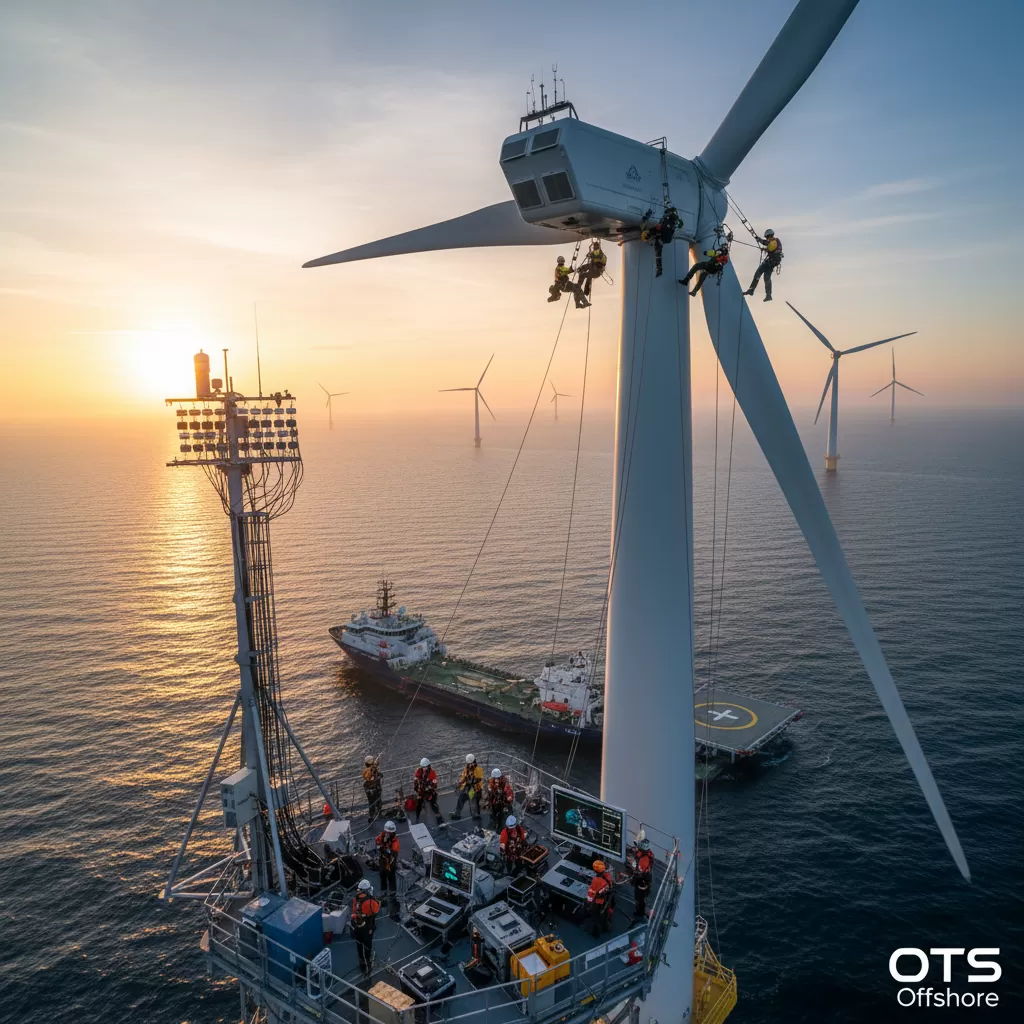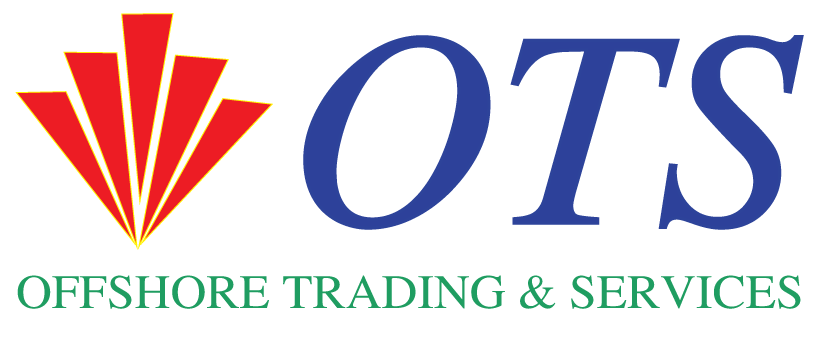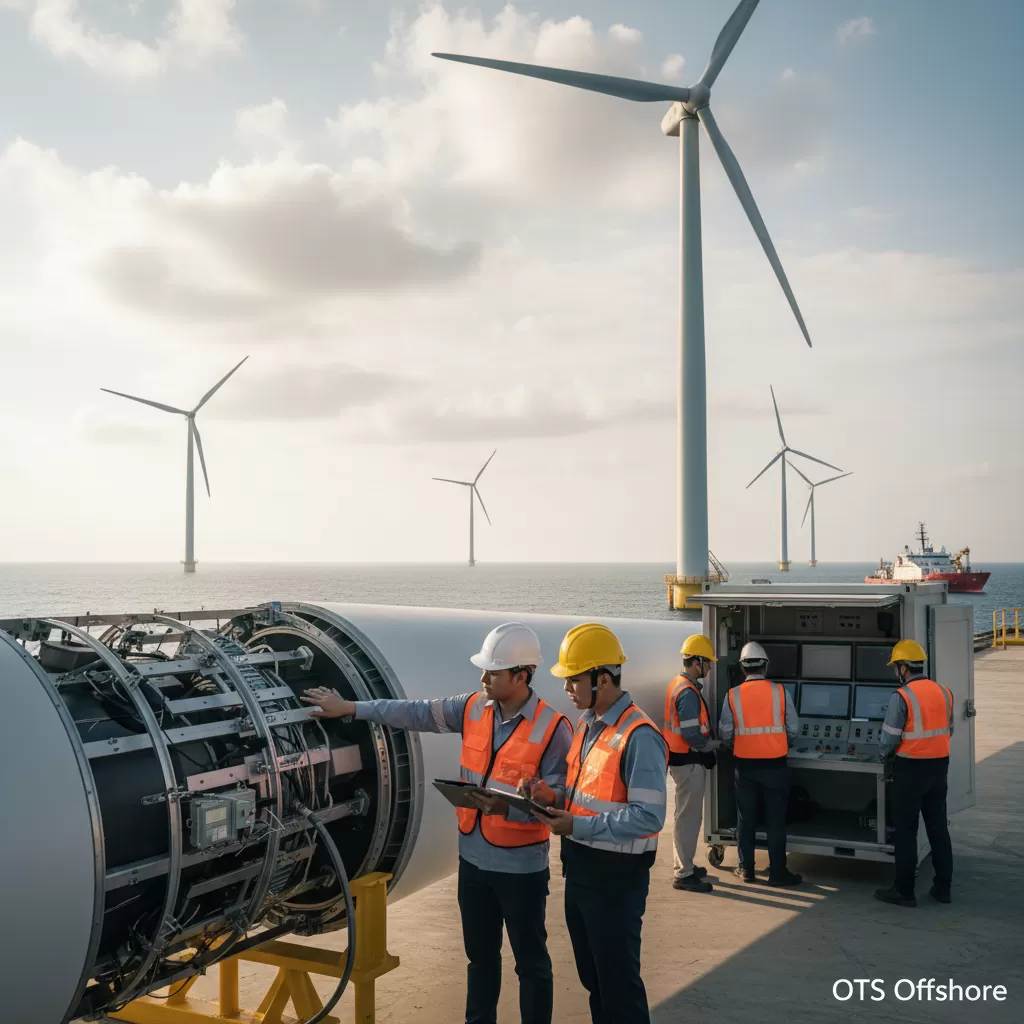This article delves into the critical **Standards Guidelines Wind** governing the testing and certification of wind turbines, specifically referencing TCVN 10687-22:2018. It outlines the essential processes, methodologies, and documentation required to ensure the safety, reliability, and performance of wind energy systems within the Vietnamese regulatory framework, offering valuable insights for stakeholders in the renewable energy sector.
Understanding TCVN 10687-22:2018 Standards Guidelines Wind for Wind Turbine Lifecycle
The intricate process of developing, manufacturing, installing, and operating wind turbines necessitates a robust framework of technical specifications and regulatory compliance. In Vietnam, TCVN 10687-22:2018 serves as a cornerstone document, providing comprehensive **Standards Guidelines Wind** for the testing and certification of wind turbine generator systems. This Vietnamese National Standard, aligned with international best practices, ensures that wind power assets meet stringent performance, safety, and environmental criteria throughout their operational lifespan. Adherence to these guidelines is paramount for fostering investor confidence, guaranteeing grid stability, and maximizing the economic viability of wind energy projects. The meticulous application of these standards mitigates risks associated with equipment failure, operational inefficiencies, and potential hazards, thereby underpinning the sustainable growth of the wind energy sector.
The genesis of TCVN 10687-22:2018 lies in the global imperative to standardize wind turbine technology and ensure interoperability, safety, and efficiency. As the renewable energy landscape evolves, so too do the requirements for quality assurance and performance validation. This standard addresses a critical need for a unified approach to wind turbine testing, encompassing a wide array of technical parameters and operational scenarios. It guides manufacturers in design and production, assists developers in procurement and installation, and supports operators in maintenance and performance monitoring. The implications of these **Standards Guidelines Wind** extend beyond mere compliance; they are integral to the long-term success and environmental integrity of wind energy infrastructure.
The Crucial Role of Testing in Wind Turbine Certification
The certification of wind turbines is not a perfunctory exercise but a rigorous scientific and engineering endeavor. It involves a series of systematic tests designed to verify that a wind turbine meets specified performance criteria, safety regulations, and design standards. TCVN 10687-22:2018 meticulously outlines these testing protocols, ensuring that every component and the integrated system functions as intended under a variety of operational conditions. This thoroughness is indispensable for guaranteeing the reliability and longevity of wind power generation, minimizing downtime, and preventing potential catastrophic failures.
Categorizing Wind Turbine Tests Under TCVN 10687-22:2018
Within the framework of TCVN 10687-22:2018, wind turbine testing can be broadly categorized into several key phases, each addressing specific aspects of the turbine’s functionality and structural integrity. These categories are designed to provide a holistic assessment, from individual component verification to full-scale operational validation. Understanding these distinctions is vital for stakeholders involved in wind farm development and operation.
– Type tests: These are performed on representative prototypes of a particular wind turbine model to demonstrate compliance with design specifications and international standards. They often involve extensive laboratory testing and site validation under simulated extreme conditions. These tests are crucial for validating the design before mass production.
– Component tests: Focusing on individual parts such as blades, gearboxes, generators, and control systems, these tests ensure that each component meets its specific performance and durability requirements. This granular approach helps identify potential weaknesses early in the development process.
– Site acceptance tests (SATs): Conducted after installation at the intended wind farm location, SATs confirm that the turbine has been installed correctly and performs according to the manufacturer’s specifications under actual site conditions. This phase is critical for verifying installation quality and initial operational readiness.
– Performance verification tests: These ongoing tests monitor the turbine’s energy production and efficiency over time, comparing actual output against predicted performance. They are essential for optimizing energy capture and identifying any degradation in performance.
– Power curve verification: A core aspect of performance testing, this involves measuring the turbine’s power output at various wind speeds to create an accurate power curve. This curve is fundamental for revenue forecasting and performance benchmarking.
– Electrical system tests: These tests ensure the integrity and functionality of the turbine’s electrical components, including the generator, power converter, and control system, verifying grid code compliance and safety features.
– Structural integrity tests: Evaluating the turbine’s resistance to mechanical loads, vibrations, and fatigue, these tests are critical for ensuring structural safety and preventing premature component failure, especially under extreme weather events.

The Pillars of Certification: Documentation and Compliance
Certification under TCVN 10687-22:2018 is not solely about passing tests; it is equally about meticulous documentation and unwavering adherence to the established guidelines. The certification body requires a comprehensive suite of documents that substantiate the turbine’s design, manufacturing processes, testing results, and operational procedures. This paper trail serves as undeniable proof of compliance and a vital reference for future inspections and audits.
Essential Documentation for Wind Turbine Certification
The dossier required for wind turbine certification is extensive and covers every aspect of the turbine’s lifecycle. Proper organization and presentation of these documents are key to a smooth certification process.
– Design and engineering reports: This includes detailed engineering drawings, structural analyses, aerodynamic performance simulations, and electrical system schematics, demonstrating that the turbine’s design meets all relevant standards and safety requirements.
– Manufacturing quality control records: Evidence of quality checks and testing conducted during the manufacturing process for all critical components, ensuring consistency and adherence to specifications.
– Type test reports: Comprehensive reports detailing the procedures, results, and analysis of type tests performed on the turbine prototype, validating its overall performance and safety.
– Site acceptance test reports: Documentation confirming the successful completion of SATs, verifying correct installation and initial operational parameters at the project site.
– Operational and maintenance manuals: Detailed guides for the operation, maintenance, and troubleshooting of the wind turbine, ensuring safe and efficient long-term performance.
– Environmental impact assessment reports: Studies detailing the potential environmental impacts of the wind turbine installation and operation, and the mitigation measures to be implemented.
– Safety case and risk assessment: A thorough analysis of potential hazards associated with the wind turbine’s operation and the implementation of robust safety protocols to mitigate these risks.
Navigating the Certification Process: Key Considerations
The journey to obtaining certification for a wind turbine is a multi-faceted process that demands careful planning and execution. Stakeholders must possess a deep understanding of TCVN 10687-22:2018 and its practical implications for their specific project. Proactive engagement with certification bodies and a commitment to quality are indispensable for success.
Strategic Steps for Successful Wind Turbine Certification
Achieving certification requires a systematic and informed approach, ensuring all requirements are met efficiently and effectively.
– Early engagement with certification bodies: Initiating dialogue with the relevant certification authority early in the project lifecycle allows for clarification of requirements and identification of potential challenges.
– Robust quality management system: Implementing a comprehensive quality management system throughout the design, manufacturing, and installation phases is fundamental to meeting certification standards.
– Diligent record-keeping: Maintaining accurate and organized records for all design, manufacturing, testing, and operational activities is crucial for substantiating compliance.
– Competent personnel: Ensuring that all personnel involved in the testing and certification process are adequately trained and experienced is vital for accurate results and reliable assessments.
– Independent verification and validation: Employing independent third-party experts for verification and validation of test results adds an extra layer of assurance and credibility.
The Economic Imperative of Standards Guidelines Wind
Beyond safety and reliability, adherence to rigorous **Standards Guidelines Wind** has profound economic implications for the wind energy sector. Certified wind turbines command greater investor confidence, facilitate easier access to financing, and often achieve higher market values. Furthermore, well-documented compliance can streamline permitting processes and reduce the risk of costly disputes or operational disruptions. The long-term economic benefits derived from investing in certified technology far outweigh the initial costs associated with rigorous testing and certification.
International Alignment and Local Adaptation of Standards Guidelines Wind
TCVN 10687-22:2018, while a national standard, is developed with a keen awareness of international benchmarks, such as those set by the International Electrotechnical Commission (IEC). This ensures that Vietnamese wind turbines are not only compliant with local regulations but also meet global standards, facilitating international trade and investment in the renewable energy sector. The balance between international best practices and local adaptation is key to creating a regulatory environment that is both robust and practical.

The Future of Wind Turbine Testing and Certification
The field of wind turbine technology is in constant flux, with innovations in blade design, drivetrain efficiency, and control systems emerging rapidly. Consequently, the **Standards Guidelines Wind** must also evolve. Future iterations of TCVN 10687-22 will likely incorporate advancements in areas such as smart grid integration, advanced materials, and predictive maintenance technologies. The ongoing refinement of these standards is essential to ensure that the wind energy sector remains at the forefront of technological innovation and environmental sustainability.
Emerging Trends Influencing Standards Guidelines Wind
The dynamic nature of renewable energy necessitates a forward-looking approach to standards. Several key trends are shaping the future landscape of wind turbine testing and certification.
– Digitalization and data analytics: The increasing use of sensors, IoT devices, and advanced data analytics offers unprecedented opportunities for real-time performance monitoring, fault detection, and predictive maintenance, which will be increasingly reflected in certification requirements.
– Cybersecurity: As wind turbines become more interconnected, ensuring the cybersecurity of control systems and data transmission becomes paramount, leading to new standards addressing these vulnerabilities.
– Grid integration requirements: With the growing penetration of wind power into the grid, standards are evolving to mandate more sophisticated grid support functionalities, such as frequency and voltage regulation.
– Advanced materials and manufacturing: Innovations in composite materials for blades and advanced manufacturing techniques will require updated testing protocols to ensure the integrity and longevity of these new components.
– Sustainability and lifecycle assessment: A growing focus on the environmental footprint of wind turbines throughout their entire lifecycle, from manufacturing to decommissioning, is influencing certification requirements to promote circular economy principles.
The rigorous application of TCVN 10687-22:2018, and its future evolutions, represents a commitment to excellence within Vietnam’s burgeoning wind energy sector. These **Standards Guidelines Wind** are not merely bureaucratic hurdles but essential enablers of safe, reliable, and economically viable renewable energy production. They form the bedrock upon which trust is built, investment is secured, and the transition to a sustainable energy future is accelerated.








